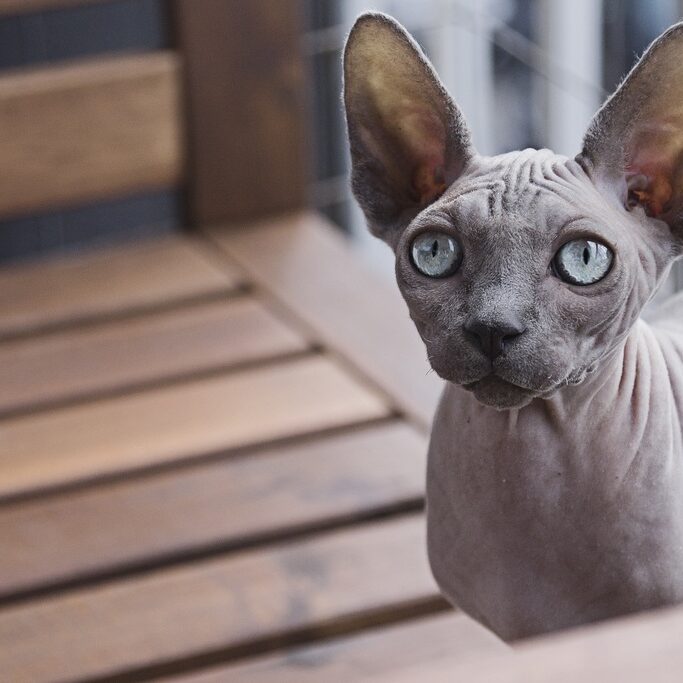
Peterbald cats are part of the so-called hairless cats, as they do not have fur, unlike most feline breeds. Specifically, it is an “oriental version” of the famous sphynx cats, obtained from crossing with other feline breeds.
Summary
Origin and History
The Peterbald came into existence in St. Petersburg, Russia, in 1994, from the breeding efforts of Olga S. Mironova. The initial crossbreeding between a hairless Don Sphynx (also known as the Donskoy) and an Oriental Shorthair produced a cat with a unique set of characteristics, including a hairless or very short coat and the elegant, slender body of the Oriental breeds. The breed quickly gained popularity and was recognized by major cat fancier associations within a few years of its inception.
Physical Characteristics
Peterbalds are known for their slim, muscular build, elongated head, and large, almond-shaped eyes that give them an alert and intelligent expression. One of the breed’s most distinctive features is its coat, or lack thereof. Peterbald cats can be completely hairless or have various degrees of hair, including a velvety coat, a bristle-like coat, or a straight coat. The skin of a Peterbald is warm and soft to the touch, and cats that do have hair can lose it over time.
Personality and Temperament
Peterbalds are affectionate, social, and highly intelligent cats. They form strong bonds with their families and are known for their loyal and loving nature. This breed enjoys being involved in every aspect of their owner’s life, often following them around the house and seeking out physical contact. Peterbalds are also known for their playful and curious disposition, enjoying interactive toys and games that challenge their mental and physical agility.
Care and Health
While Peterbalds are generally healthy, their unique skin requires special care. For hairless varieties, regular bathing is necessary to remove oil buildup on the skin, and care should be taken to protect them from extreme temperatures. Cats with a coat still benefit from regular grooming to maintain skin health. As with all breeds, Peterbalds should receive regular veterinary check-ups, a balanced diet, and plenty of exercises to keep them healthy and happy.
Living with a Peterbald
Peterbald cats thrive in environments where they can receive lots of attention and interaction. Their social nature means they do well in homes with other pets and children, as long as they’re introduced properly. Given their lack of hair or fine coat, they are best suited to indoor living to protect them from cold weather and sunburn. For those looking for an affectionate, engaging, and unique cat, the Peterbald offers a rewarding companionship that is both elegant and endearing.
Latest on CatOlympus
Feline Health: Debunking Myths and Unveiling Truths About Feeding Your Cat
In the realm of pet care, few topics are as riddled with myths and misconceptions as the diet of our...
Cats and Technology: Innovative Toys for Your Pet
In the era of smart living, even our feline friends can enjoy the perks of technological advancements. The fusion of...
The Reign of Cats on the Internet: An Exploration of Feline Fame
The Reign of Cats on the Internet: An Exploration of Feline Fame In the vast expanse of the internet, one...
Easy and Free Cat – Human Age Calculator
Understanding Cat Years: A Guide to Your Cat's Age in Human Years As cat lovers, we often marvel at our...













